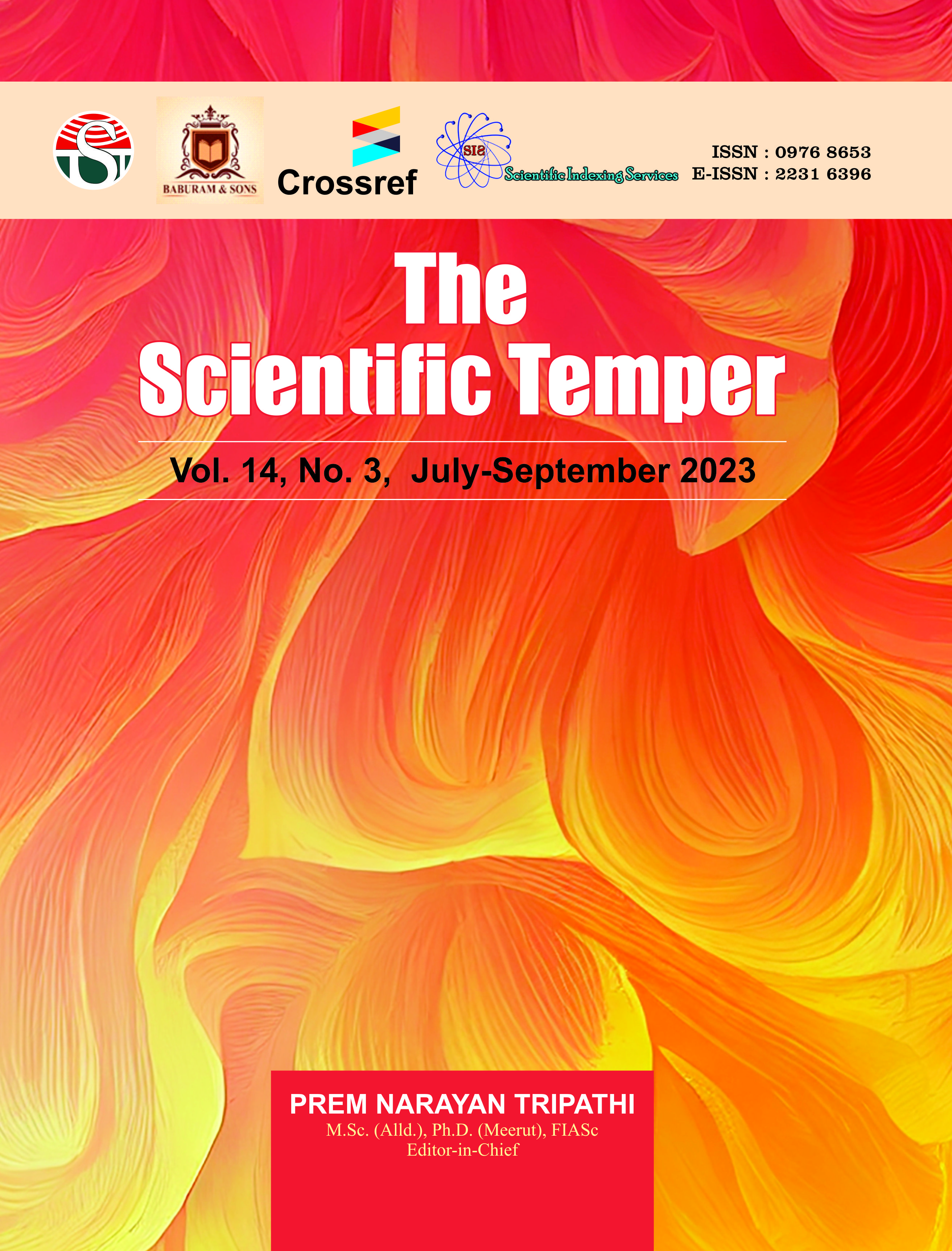Deep learning hyperparameter’s impact on potato disease detection
Downloads
Published
DOI:
https://doi.org/10.58414/SCIENTIFICTEMPER.2023.14.3.04Keywords:
Deep learning, CNN, Batch size, Optimizer, Activation function, PotatoDimensions Badge
Issue
Section
License
Copyright (c) 2023 The Scientific Temper

This work is licensed under a Creative Commons Attribution-NonCommercial-ShareAlike 4.0 International License.
In this study, we reviewed various published works that used deep learning techniques to detect potato leaf disease. Deep learning techniques have shown remarkable detection performance for potato leaf disease. In particular, CNN has been shown to be efficient in extracting features from images and in identifying patterns that are challenging to identify using machine learning techniques. However, CNN architectures with different activation functions, batch sizes, and optimizers can cause different results. Therefore, in this work, a CNN model has been implemented to analyze the effect of different activation functions, batch sizes, and optimizers for the detection of potato leaf diseases. Based on the findings of three experiments, the leaky rectifier function performed best as the activation function for the convolutional neural network (CNN) model. AdaGrad’s optimizer showed superior accuracy compared to stochastic gradient descent (SGD), Adam, Adamax, and RMSProp algorithms. We also discovered that the model’s performance was even better, but only when the batch size used in the model was smaller than the size of the test dataset. The work is based on deep learning to identify potato leaf disease and provide researchers and practitioners with heuristic knowledge to help increase potato production when CNN is employed in the agricultural sector.Abstract
How to Cite
Downloads
Similar Articles
- Adedotun Adedayo F, Odusanya Oluwaseun A, Adesina Olumide S, Adeyiga J. A, Okagbue, Hilary I, Oyewole O, Prediction of automobile insurance fraud claims using machine learning , The Scientific Temper: Vol. 14 No. 03 (2023): The Scientific Temper
- N. Saranya, M. Kalpana Devi, A. Mythili, Summia P. H, Data science and machine learning methods for detecting credit card fraud , The Scientific Temper: Vol. 14 No. 03 (2023): The Scientific Temper
- R. Gomathi, Balaji V, Sanjay R. Pawar, Ayesha Siddiqua, M. Dhanalakshmi, Ravi Rastogi, Ensuring ethical integrity and bias reduction in machine learning models , The Scientific Temper: Vol. 15 No. 01 (2024): The Scientific Temper
- Milindkumar N. Dandale, Amar P. Yadav, P. S. K. Reddy, Seema G. Kadu, Madhusudana T, Manthan S. Manavadaria, Deep learning enhanced drug discovery for novel biomaterials in regenerative medicine utilizing graph neural network approach for predicting cellular responses , The Scientific Temper: Vol. 15 No. 01 (2024): The Scientific Temper
- L. Amudavalli, K. Muthuramalingam, Energy-efficient location-based routing protocol for wireless sensor networks using teaching-learning soccer league optimization (TLSLO) , The Scientific Temper: Vol. 15 No. spl-1 (2024): The Scientific Temper
- Mansi Harjivan Chauhan, Divyang D. Vyas, Advancements in sentiment analysis – A comprehensive review of recent techniques and challenges , The Scientific Temper: Vol. 16 No. Spl-1 (2025): The Scientific Temper
- Jayaganesh Jagannathan, Dr. Agrawal Rajesh K, Dr. Neelam Labhade-Kumar, Ravi Rastogi, Manu Vasudevan Unni, K. K. Baseer, Developing interpretable models and techniques for explainable AI in decision-making , The Scientific Temper: Vol. 14 No. 04 (2023): The Scientific Temper
- Harshaben Raghubhai Pankuta, Kusum R. Yadav, Assessing students’ perception of the academic features of the Gyankunj Project , The Scientific Temper: Vol. 16 No. Spl-1 (2025): The Scientific Temper
- V. Babydeepa, K. Sindhu, Piecewise adaptive weighted smoothing-based multivariate rosenthal correlative target projection for lung and uterus cancer prediction with big data , The Scientific Temper: Vol. 15 No. 03 (2024): The Scientific Temper
- R. Kalaiselvi, P. Meenakshi Sundaram, Machine learning-based ERA model for detecting Sybil attacks on mobile ad hoc networks , The Scientific Temper: Vol. 15 No. 04 (2024): The Scientific Temper
<< < 5 6 7 8 9 10 11 12 13 14 > >>
You may also start an advanced similarity search for this article.
Most read articles by the same author(s)
- Temesgen A. Asfaw, Batch size impact on enset leaf disease detection , The Scientific Temper: Vol. 15 No. 01 (2024): The Scientific Temper



